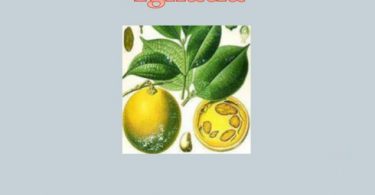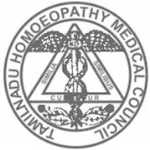
Dr. Edward Bach was the founder of Bach Flower System of Remedies, which is been used worldwide since more than 8 decades. He was born on the 24th September 1886 at The Hollies, Alcester Road, Moseley, Kings Norton Worcestershire in United Kingdom. In 1906 he entered Birmingham University to study for his matriculation. From Birmingham he went to London University College Hospital London, where he obtained the Conjunct Diploma of M.R.C.S. (Member of the Royal College of Surgeons) and L.R.C.P. (Licentiate of the Royal College of Physicians to finish his medical training. In 1914 he was awarded the Diploma in Public Health (Cambridge).
It seemed to him that modern medicine failed in some way and that surgery could rarely do more than palliate and relieve. This made him look around for other methods of healing and he now became interested in the immunity school. Consequently he became Assistant Bacteriologist at University College Hospital and hoped that in bacteriology he would find the answers to his problems. During this time he discovered that certain intestinal bacteria, which up to then, had been considered of little or no importance, were closely related to chronic diseases and their cure. These bacteria were present in the intestines of healthy people but in people who were suffering a chronic disease they increased vastly.
Following months of investigation Dr. Bach became convinced that a vaccine made from these intestinal bacteria would have the effect of cleansing the system of the poisons, which caused the chronic disease. Though he obtained very encouraging results from these vaccines he disliked the method of injecting them through the skin because this caused a painful reaction in the patient (as many of us have experienced when we have had painful reactions to inoculations). He set himself the task of finding a simpler method of application. This was partly solved by his next discovery, when he noticed that when a vaccine was not repeated until the beneficial effects of the former one had worn off; or the patients process of recovery had become stationary, the results were better than when the doses were administered at set times (say three or four times per day) and had a far less severe reaction on the patient. So long as the improvement was maintained no further treatment need be given. Only if there was a relapse or the condition became stationary need the dose be repeated. This was so similar to the Homeopathic mode of repetition of doses.
In March 1919 he accepted the post of Pathologist and Bacteriologist at the London Homeopathic Hospital. It was here that he read ‘The Organon’ by Samuel Hahnemann, the founder of Homeopathy, where he states “Treat the patient not the disease”.
He classified the enormous variety of organisms present in the intestines of humans into seven groups, by means of their fermentation action on sugar which he named
1) Proteus, 2) Dysentery, 3) Morgan, 4) Faecalis Alkaligenes, 5) Coil Mutabile 6) Gaertner and 7) No7. The property of vaccines prepared from these groups he found to be that of purifying the intestinal tract and of cleansing and keeping pure all that was eaten, so that what left the body was wholesome, clean and inoffensive. Each patient was tested for the bacterial group predominant in the intestines and either an autogenous of polyvalent nosode given. In the autogenous method a remedy was made of the organism isolated from a particular patient and given either by injection or by mouth. To cover a great number of cases a polyvalent nosode, that is one made from collecting organisms from hundreds of patients then potentising the whole to make a remedy.
The following papers were published by Dr. Edward Bach
1) The Relation of Vaccine Therapy to Homeopathy by Edward Bach M.B., B.S., D.P.H. published in The British Homeopathic Journal.
He also read this as a paper to the London Homeopathic Society in April 1920
2) The Nature of Serum Antitrypsin and its Relation to Autolysis and the Formation of Toxins by F.H. Teal and E. Bach published in The Proceedings of The Royal Society of Medicine.
3) The Relation of Autotryptic Titre of Blood to Bacteria Infection and Anaphylaxis by F. H. Teal and E. Bach published in The Proceedings of The Royal Society of Medicine
4)The fate of ‘washed spores’ on inoculation into animals, with special reference to the Nature of Bacterial Toxaemia. by F.H. Teal and E. Bach Journal of Pathology and Bacteriology
Later in the year 1922 Bach gave up his post at the London Homeopathic Hospital and moved to a large laboratory in Park Crescent, off Portland Place .
Bach was dissatisfied with using the products of disease to cure disease, “I wish it were possible that we could present to you seven herbs instead of seven groups of bacteria” (1929). He finally found the solution to his dilemma “Yet there is one thing lacking in the effort to avoid using bacterial nosodes, this vital point is polarity. The remedies of the meadow and nature, when potentised are of a positive polarity; whereas those which have been associated with disease are of the reverse type”. He found that the Sun Method and the Boiling Method of preparation made remedies of a positive polarity. “Science is tending to show that life is harmony – a state of being in tune – and that disease is discord or a condition when a part of the whole is not vibrating in unison.
The Masonic Dinner 1928:
Bach had attended the dinner unwillingly and was not enjoying himself. To pass the time he was idly watching the people around him when he suddenly realised that the whole of humanity consisted of a number of groups; by the time the dinner was over he had worked out a number of groups and was busy in his mind comparing these with the seven bacterial groups. He discovered that he had added more type groups to that number and realised that more would still be added. He wondered whether the diseases from which these groups suffered would bear a resemblance to each other. Then came the inspiration that the individuals of each group would not suffer from the same kinds of disease, but that all of those in any group would react in the same or nearly the same manner to any type of illness. From the end of 1929 he gave up all methods of treatment except “the pure and simple herbs of the field”, he began with Impatiens, Mimulus and Clematis, which interestingly enough are the remedies for impatience, he would need patience to complete his task, mimulus for fear of the known he would experience fear as he began the new tasks and clematis, the remedy which gets our heads out of the clouds and helps us to ground our ideas. He eventually found that there were 12 groups or predominant states of mind into which people fell.
“One early morning in May he was walking through a field on which the dew still lay heavy, the thought flashed into his mind that each dewdrop must contain some of the properties of the plant on which it rested; for the heat of the sun, acting through the fluid, would serve to draw out these properties until each drop was magnetised with power. Later he noted that the sun’s heat was essential to the process of extraction, for the dew collected from plants in shady places was not so potent as that from plants in full sunlight.. To collect sufficient dew from individual flowers would be too laborious and take too long a time, so he decided to take a few blooms from an individual plant and place them in a glass bowl filled with water from a clear stream, and leave it standing in a field in full sunlight for several hours. It was the method of simplicity he longed for, the simplicity of mighty things, for fire, air, earth and water were working together to produce healing remedies of great power.
He travelled across country experimenting with the dew from wild flowers finally arriving at Abersoch, a small seaside village a few miles from Pwllheli in Wales where he stayed until the end of July. It was here that he perfected the sun method of extracting the healing properties of plants and where he wrote the manuscript to possibly his most important book, the book which lays out his whole healing philosophy, Heal Thyself.
Some famous books written by Dr Bach are:
Ye Suffer From Yourselves
An address given in Southport in February
Possibly the first public expression of his spiritual thoughts. This created a shift for him
Heal Thyself “An Explanation of the Real Cause and Cure of Disease”
“This book is dedicated to all who suffer or are in distress” Dr Bach
Free Thyself
In which he explores many of the ideas which form part of Heal Thyself, in the form of a children’s story about living in balance with one’s desires and life.
Bach returned to London for a few days but then traveled to Cromer on the Norfolk coast..
During this time he discovered the following remedies; in August, Agrimony, Centaury, Chicory, Cerato and Vervain in September, Scleranthus
In 1932 he came to Westerham, he had found Gentian the previous year, this time he found Rock Rose, the last in the series which he called “The Twelve Healers”, later to become The Twelve Healers and other remedies.
Dr. Bach had through number of experiments confirmed that physical disease was not of physical origin but that is was as he said ‘the consolidation of mental attitude”. He said that diseases was because there is “disharmony between the soul & body. Remove the disharmony, and we regain harmony between soul and mind, and the body is once more perfect in all its parts.”
He left his work in the hands of his friends and colleagues Nora Weeks and Victor Bullen, with instructions that they should carry on his work and stay true to the essential simplicity of what he had done. In a letter to Victor dated 26th October 1936, a month before his death, he wrote:
People like ourselves who have tasted the glory of self-sacrifice, the glory of helping our brothers, once we have been given a jewel of such magnitude, nothing can deviate us from our path of love and duty to displaying its lustre, pure and unadorned to the people of the world.
The strain of a lifetime of work now began to take its toll. For the second time in his life he now became very seriously ill. In the evening of November 27th 1936 he passed away peacefully in his sleep.
Bibliography
- http://www.bachcentre.com/found/rp_full.php





